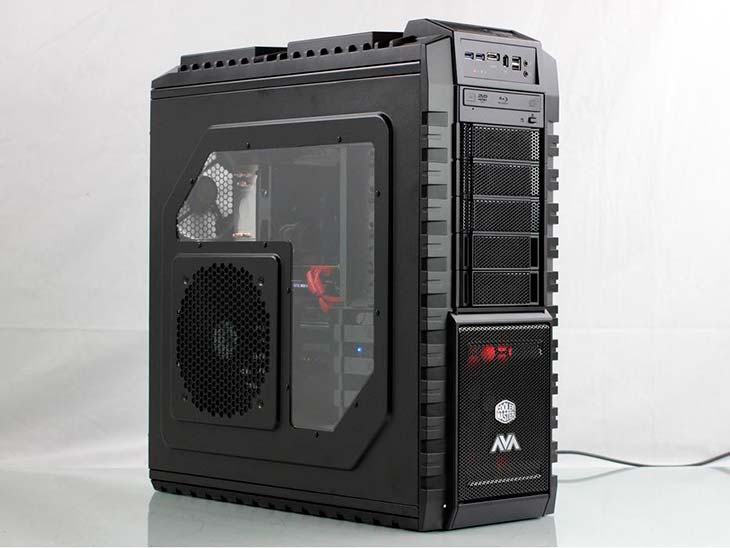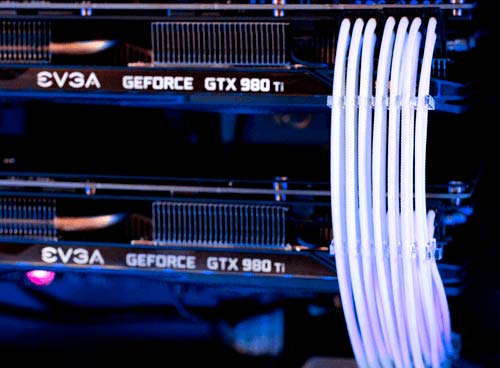
Protect Your PC Against the Future
Technology is advancing faster than anyone could have ever imagined, and it makes building the ultimate, long-lasting gaming PC difficult. Obsolescence is a HUGE problem in the industry, and many people make it their life’s battle to fight against aging technology. Today, I have found a cure: Future Proofing.
A straightforward definition of future-proof is a product that does not need to be significantly upgraded as technology moves forward. In terms of your PC, this could mean giving it a collection of the latest hardware that will help it last longer and perform better. Future proofing your computer will help extend the life of your system so that you will be able to play the hottest games in three years from now. It helps defend against the quick obsolescence that is prevalent across the entire tech industry. It also can reduce your overall computer costs, but only if the right gadgets are future proofed.
Most people believe that the best way to future-proof is to buy all brand-new components at the highest end of the market. Is this really the best strategy? The short answer is actually no. Future proofing your PC is almost an art that many builders take very seriously. And with good reason. The trick to long-lasting PC’s is picking the right parts at the right time for your computer. For those of you that are new to building, the hardest part is finding out where to start the future proofing process, and I’m here to help you out, at least a little.
Step 1: Determine Your Level of Need
Future proofing is all about longevity. Your computer needs to be able to compete with the newer programs and technology in three to five years. However, there are some instances when future proofing your computer is really not necessary, or wise. For example, if you are just using your computer to surf the web and do simple tasks like use Microsoft Office, then you don’t necessarily have to worry about future proofing. The computer and the internet have already been invented. The changes in technology that you will most likely run into are mild software updates to get the newest Windows or Microsoft Office Suite. In this instance, the best strategy for preventing obsolescence is to purchase a newer, mid to top of the line computer, since CPU chips and processing speeds won’t affect your system as much as someone using the PC for a different purpose.
If the work load that you are asking of your computer is a little more than just web browsing, then you should consider a different approach to your future proofing strategy. Gaming computers in particular are going to need heavy graphics power, and bigger design programs like CAD are going to need a little more memory than most. Fortunately, there is an easy way to determine which parts to future-proof and which to not worry about for now.

Step 2: Determine Your Budget
Most people think that the only way to future-proof is to buy all of the newest technology on the market at super high prices. This is definitely not the case. Although you could drop several thousand dollars on the highest end equipment, it is not always the best or most feasible option. Determining your budget for each component going into your computer is a great way to benchmark yourself and prevent overspending. Parts range from $50 all the way up to several hundred dollars, so if you budget and price your PC out now, it will be easier to reach your end goal of a quality, future-proof system. The nice thing about customization is that you can get great parts without having to spend a fortune and still have great results. Keeping this in mind, we move on to step three.
Step 3: Picking Your Parts
Future proofing your computer starts with choosing the right parts that combined, will work efficiently and effectively for several years to come. Pretty straightforward, right? Like I said, future proofing is an art. Below are some of the biggest components to consider when you want to future-proof your computer.
CPU
The CPU chip you install will have a lot to do with how your system will run now and in the future, so it is important to look to more current models. This could mean Intel’s Core series or even AMD’s A series APU’s or FX CPU series. One thing to look for is a Quad Core processor. They can handle just about everything from minimal to heavy work, and provide great quality processing. Gamers who stream at 1080p or higher and video designers should consider the i7 or the FX 9000 series for best power and longevity. Aside from that, this is one of those instances that you could get a mid-line CPU and still have great, long lasting performance from your computer.
Memory
The second piece to consider when purchasing your next computer is the amount of memory (RAM) it has. Most people don’t use or need more than 8 or 16 GB of RAM. That being said, users of design programs should look into either more RAM or an external hard drive to provide more memory space for their larger, memory sucking programs. In terms of future proofing, memory is really cheap comparatively. Every year, bigger memory for cheaper prices comes out, making the top of the line RAM not very price conservative in the long run. This is one area where you can definitely save some pennies by buying only what you need at the time and upgrading later.
Graphics Cards
Graphics cards produce the most debate when talking about future proofing. The need level of your graphics card can change depending on the kind of performance that you expect from your computer. On top of that, new models come out every year, with bigger and better performance than the last. Graphics cards usually are one of the first parts needing to need upgraded because they are constantly being used, and have worn down tremendously from working too hard. The hardest part about future proofing any technology is that you cannot predict the future (sadly), and buying the wrong graphics card now could result in needing many more down the road.

The best strategy for future proofing your graphics cards is to evaluate your graphics needs (specifically the resolution you are using most now) and your future needs. If you plan on playing at 1080p, then two lower level graphics cards or one higher end card may be able to do the job, but not last as long as you hope. On the other hand, you are going to need often 4 GB of VRAM and higher clock speeds in order to play at higher resolutions, such as for heavy gaming and virtual reality. This calls for the bigger and better graphics cards like the Radeon R9 series or the GeForce GTX 10 Series. Unfortunately, graphics cards are one of those components that you are better off buying just above your current needs and upgrading when needed so that you aren’t overspending by buying the most expensive high performing card when you don’t really need all that excess power.
Future proofing is extremely difficult to master since technology is advancing, but these few tips and tricks should be able to help you make some more informed decisions about your computer components. If you are ever wondering what would work best for you, just ask! The gaming community is a great wealth of information about things that have and have not worked for people who are building their own PCs. How did you future-proof your rig? Any advice to give to newbies? Comment below and share on Facebook and Twitter to join in the conversation!

Best Games of 2025
